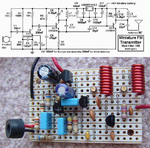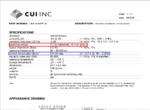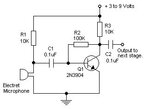Eshal
Advanced Member level 1

- Joined
- Aug 29, 2012
- Messages
- 470
- Helped
- 16
- Reputation
- 32
- Reaction score
- 15
- Trophy points
- 1,298
- Location
- Nowhere :)
- Activity points
- 5,149
Hello to all again
I want to design my own FM transmitter and receiver module, the most simplest one so that I could understand it and its designing.
Here is the block diagram of FM transmitter

First we should design an audio oscillator. Right? So anyone can help me in designing that circuit which can generate frequency from 20Hz to 20kHz?
First this circuit then I will move forward to the 2nd block of the block diagram.
Thank you all.
I want to design my own FM transmitter and receiver module, the most simplest one so that I could understand it and its designing.
Here is the block diagram of FM transmitter

First we should design an audio oscillator. Right? So anyone can help me in designing that circuit which can generate frequency from 20Hz to 20kHz?
First this circuit then I will move forward to the 2nd block of the block diagram.
Thank you all.





